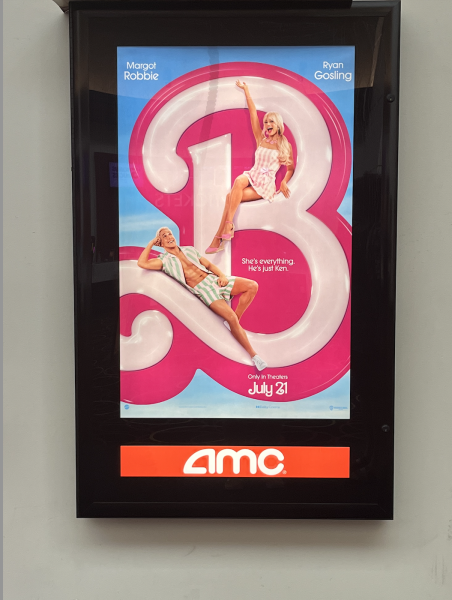
The plastic skin, synthetic blonde hair, and flimsy pink fabric of “Barbie” were a staple of many people’s childhoods. The doll was a way to create your own story at an age when your parents moderated everything else. However, as you grow older, the dolls are put down and swapped for less childish, usually less pink, things.
Years later, many will then claim that they were “never into Barbie,” probably as a way to differentiate themselves from that stereotypical little girl they use to be. Well, now those people are coming out of hiding and are renouncing their rejection of a piece of their childhood.
The summer of 2023 has been largely dominated by the live-action “Barbie” movie and its immense marketing. Starring Margot Robbie and Ryan Gosling, the movie follows Barbie and Ken leaving Barbieland and exploring the real world.
In the real world, they encounter systems that are not put in place in their matriarchal home and must go on a path of self-discovery to determine who they really are. The concept itself captivated the audience, due to the nostalgia many have and also how unknown it felt.
Barbie is such an iconic brand, with a signature feel and look. How could that be replicated and fed to an older audience in a captivating and unique way?
The answer to that question began to form in late May when the first character posters for the film dropped and quickly took over the internet. There were two different versions of the posters. All contained a photo of one of the characters but each had a different line.
On the posters for the Barbies, it would read, “This Barbie is a…” and then state the different profession that Barbie held. This was a reference to the Barbie brand’s long-standing collection of dolls that hold different careers, which was a way to show young girls they can be anything they want to be.
This individualism was not as present in the posters of the Ken dolls. In fact, every Ken poster simply held some variant of “Here’s another Ken!”
The room the Barbie posters held for creativity created a wave of original takes on the content. One website let the user upload any picture they like and then create their own variant of the Barbie tagline.
The byproducts ranged from putting yourself on the poster along with an inside joke, to things that are typically equated to the standard immaturity of dolls. Most days Batman would not be considered a Barbie, but on that day he was.
Barbie has also always been synonymous with fashion, more specifically that bright hot pink that has now become iconic. In the wake of the trailer for the film, many Barbie-inspired outfits flooded people’s Pinterest boards and Tiktok feeds. The outfits typically consisted of hot pink skirts and dresses with statement pieces of jewelry.
Some people took things a step further and recreated looks from the movie’s trailer. People were tapping into their creative sides just for the fun of it and were truly enjoying themselves. This even extended to when people went to see the movie.
At the theater I went, dozens were wearing bright pink, to the point it was obvious that almost everyone there was on their way to the same place. It created an odd communal atmosphere that I would never have expected from a movie theater full of strangers.
Arguably the most unique part of “Barbie” movie marketing is the event that no marketing team came up with, “Barbenheimer.” It all stems from the fact that Barbie was released on the same day as another film titled “Oppenheimer,” the story of the creation of the atomic bomb.
Movies come out on the same day all the time and no one thinks anything of it. But the internet became very amused by this double feature, most likely due to the complete difference in tone between the two films.
“Barbie” is a hot pink comedy-drama with an existential crisis sprinkled in. “Oppenheimer” is a dark tale of the events leading to one of the biggest tragedies in world history. To think that you could watch both of those on the same day caught the attention of many people.
Memes started to pop up in every corner of the internet, but no one could’ve imagined how it would translate to the real world. When June 21 came around, thousands of people flocked to theaters to see the double feature.
Box offices were seeing numbers for films they haven’t seen for non-comic book movies in ages. Numerous critics have noted that this phenomenon could cause a shift in how the public views movies, and might fully bring them back to theaters.
Yet the importance of “Barbie” runs far beyond its nostalgia, aesthetic, and cultural influence. The main tagline of the movie can perfectly encapsulate its message: “She’s everything. He’s just Ken.”
For a very long time, Barbies and the hyper-feminity that they are associated with were looked down upon. Now that is what is being put front and center and celebrated.
This isn’t a review for the actual movie, so I won’t go into detail about the actual plot, but even the story makes you focus on the experiences of women. It does this not in a way that paints them as crazy or belittles them, but as a way to bring them together as a group of people with shared experiences.
“Barbie” took what could’ve been an uneventful, shallow piece of film, and turned it into a summer phenomenon with a deeply important message.
